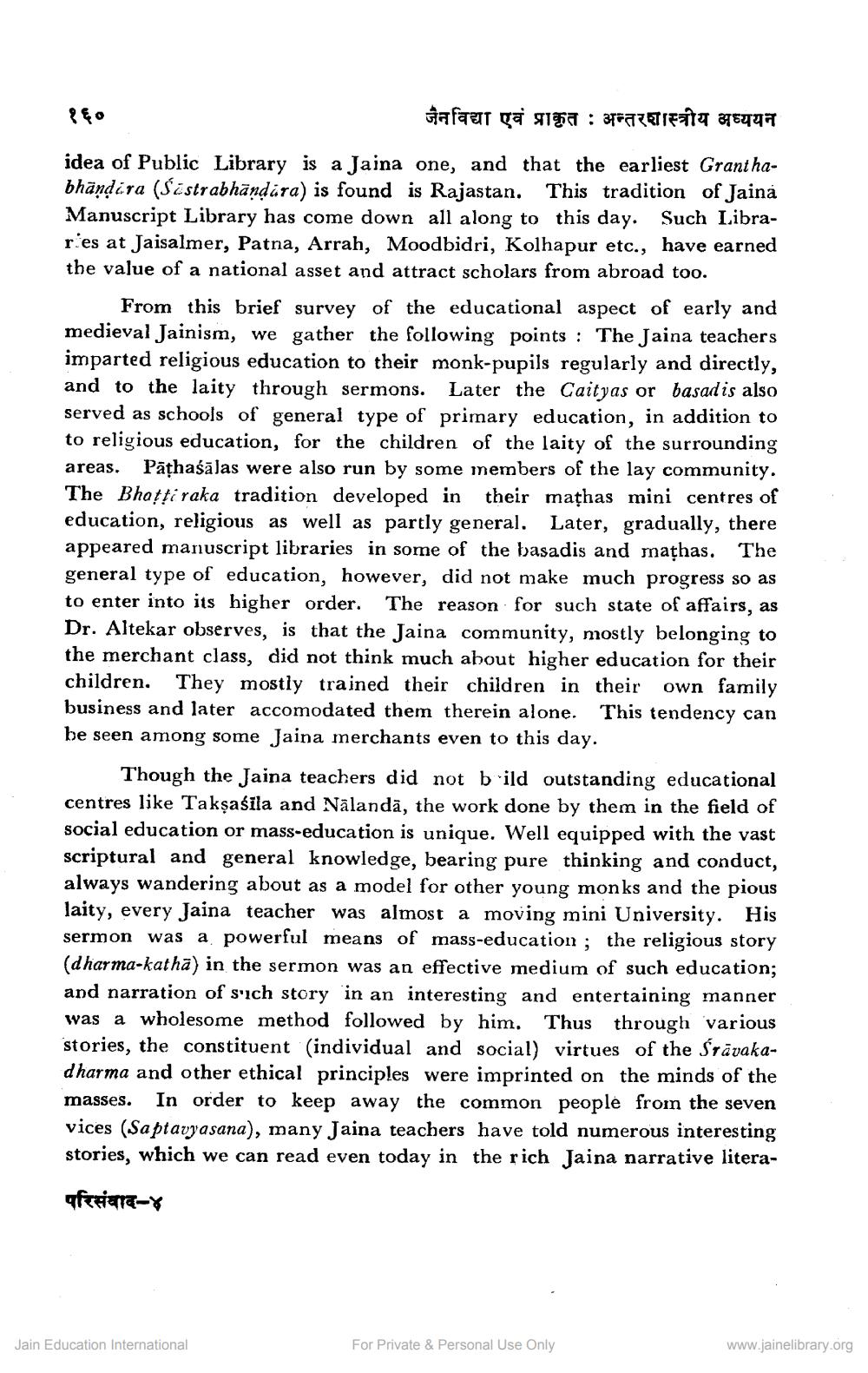Book Title: Jaina Path Of Education Author(s): B K Khadabadi Publisher: Z_Jain_Vidya_evam_Prakrit_014026_HR.pdf View full book textPage 4
________________ १६० जैनविद्या एवं प्राकृत : अन्तरशास्त्रीय अध्ययन idea of Public Library is a Jaina one, and that the earliest Granthabhāndira (Sastrabhāndara) is found is Rajastan. This tradition of Jaina Manuscript Library has come down all along to this day. Such Libraries at Jaisalmer, Patna, Arrah, Moodbidri, Kolhapur etc., have earned the value of a national asset and attract scholars from abroad too From this brief survey of the educational aspect of early and medieval Jainism, we gather the following points : The Jaina teachers imparted religious education to their monk-pupils regularly and directly, and to the laity through sermons. Later the Caityas or basadis also as schools of general type of primary education, in addition to to religious education, for the children of the laity of the surrounding areas. Pāțhaśālas were also run by some members of the lay community. The Bhatti raka tradition developed in their mathas mini centres of education, religious as well as partly general. Later, gradually, there appeared manuscript libraries in some of the basadis and mathas. The general type of education, however, did not make much progress so as to enter into its higher order. The reason for such state of affairs, as Dr. Altekar observes, is that the Jaina community, mostly belonging to the merchant class, did not think much about higher education for their children. They mostly trained their children in their own family business and later accomodated them therein alone. This tendency can be seen among some Jaina merchants even to this day. Though the Jaina teachers did not bild outstanding educational centres like Taksasila and Nālandā, the work done by them in the field of social education or mass-education is unique. Well equipped with the vast scriptural and general knowledge, bearing pure thinking and conduct, always wandering about as a model for other young monks and the pious laity, every Jaina teacher was almost a moving mini University. His sermon was a powerful means of mass-education; the religious story (dharma-kathā) in the sermon was an effective medium of such education; and narration of s'ich story in an interesting and entertaining manner was a wholesome method followed by him. Thus through various stories, the constituent (individual and social) virtues of the Stāvakadharma and other ethical principles were imprinted on the minds of the masses. In order to keep away the common people from the seven vices (Saptavyasana), many Jaina teachers have told numerous interesting stories, which we can read even today in the rich Jaina narrative litera परिसंवाद-४ Jain Education International For Private & Personal Use Only www.jainelibrary.orgPage Navigation
1 2 3 4 5 6 7 8
